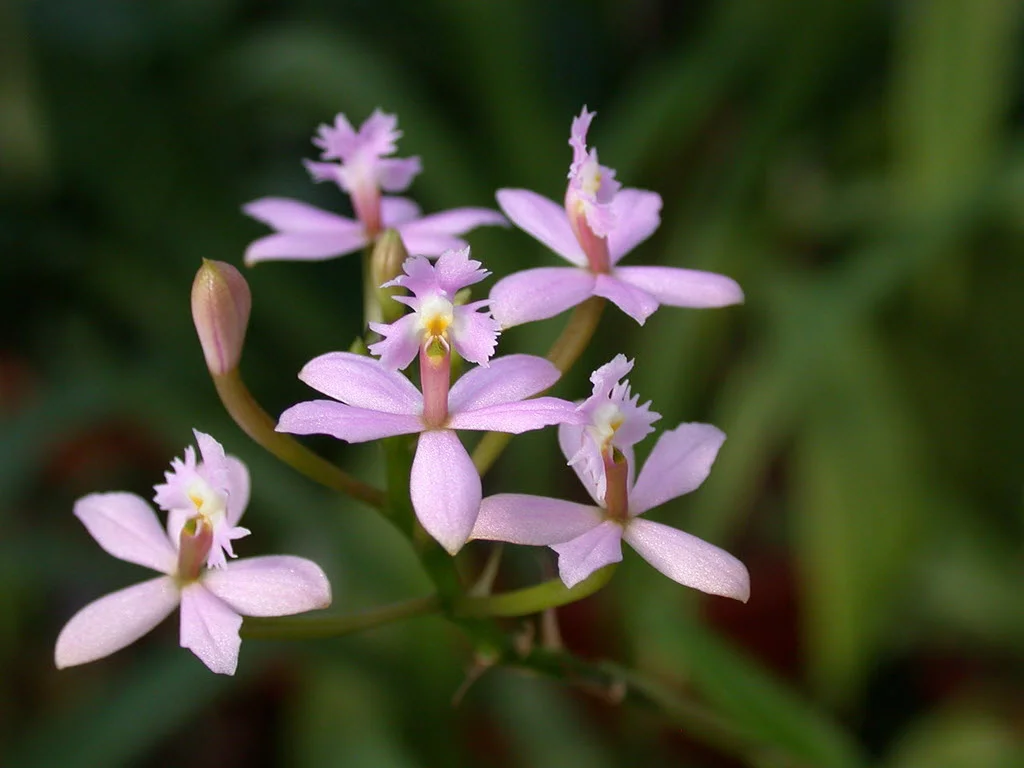Table of Contents
Pronunciation: bulb-oh-FILL-um
Introduction
The Bulbophyllum orchid genus is praised in Africa for its protective qualities, and it is thought that an infusion of the plant's leaves and pseudobulbs are an effective protection measure against witchcraft and sorcery. This belief has held for centuries.
bulbophyllum barbigerum
There are over 1,800 species in this genus, and these numbers make it the third-largest genus of any plants. Believed to have originated in Papua New Guinea, this genus is popular worldwide.
The flowers can be very large, and many of them have pungent scents that range from rotting carcasses to dung, and this is due to the fact that they attract flies to pollinate them. They're also a very fast-growing species, and it can be a challenge to keep up with them as they are a needy plant.
Temperature
Because the Bulbophyllum orchid comes from a warm climate, they'll need consistent warm temperatures to thrive, and they don't tolerate the cold at all, so you have to monitor them closely. During the daytime, they prefer temperatures ranging from 70°F to 80°F (21°C to 27°C). At night, they only tolerate a slight drop in temperatures, and they range from 55°F to 60°F (12°C to 15°C).
If you get these conditions right, your plant will flower continuously throughout the year. They also require very good ventilation and constant air flow, and this can make them a challenge to maintain indoors.
Light
For success cultivating this orchid, they have to have moderate light, and they don't do well in full light or deep shade. If they're indoors, setting them by a bright east-facing window or a partially-shaded south-facing window works well.
For anyone who is having difficulty getting their plant to grow and flower, they may not be getting enough light so you should increase light levels sightly. If you notice yellowing leaves, they could be getting too much light, and you should adjust accordingly.
Water and Humidity
This orchid likes a lot of moisture, but they don't like to be soaked continuously. Their roots are very fine and delicate, and they're prone to damage and root rot if they're left to sit in water.
You want to give them more water over longer periods of time, and never allow the roots to dry out. They also like high humidity, and you want to try to get a year-round humidity level of 70%.
Feeding
You want to fertilize your Bulbophyllum at least once every week year-round, but pay close attention to the growth period in the early spring and summer months and feed it with a 3:1:3 or 4:1:4 ratio fertilizer. You may want to increase it to 1/2 or 3/4 strength of label directions to encourage new growth, and then return to the 3:1:3 or 4:1:4 ratio.
Potting
These orchids do very well mounted on slabs of bark, but you can also grow them successfully in net pots and plastic baskets that allow a lot of air to reach the roots. This plant does tend to wander, and they outgrow their pots very rapidly so you will need to repot them in the spring every year or two - carefully.
For your potting medium, use a loose medium with a healthy mix of sphagnum moss because it's excellent for holding the correct amount of moisture in. Don't pack your potting mix tightly to your plant as they like to breathe, and the roots are very easy to damage.
Video
Brad of Brad's Greenhouse gives viewers a close look at his Bulbophyllum Phalaenopsis. Brad's face upon smelling the orchid's blooms is too priceless to miss - you have to watch this one!
And Miss Orchid Girl is always good value. Here's her video about Bulbophyllums.
If you have a bias for orchids of the more interesting variety, be sure to check out our list of all the orchid types. There’s so much variety to choose from!
Bring These Home











